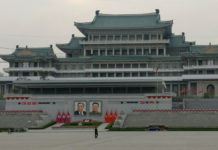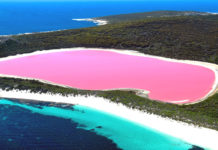Earlier bridges were popular by their length or width or the materials used in their construction and that was the way to “impress” people. But these days it takes more than the length and width to impress people. Due to advancements in technology and design software and construction materials have given bridge architects prospects to focus on original, striking and sometimes imaginative and bizarre designs that impress, while keeping function in mind. Here are some of our favorite unusual bridges
1. Rolling Bridge – United Kingdom

Conceived by Thomas Heatherwick, a British designer, the Rolling Bridge spends most of its time literally curled up in an octagon, resembling an intricate modern art sculpture, at the side of an inlet of the Grand Union Canal. However, at noon each Friday, the bridge uncurls itself and its eight triangular sections straighten out right across the inlet, to provide bridge access to the other side.
2. Gateshead Millennium Bridge, London

This award-winning structure was conceived and designed by architect Wilkinson Eyre and structural engineer Gifford. The bridge is sometimes referred to as the ‘Blinking Eye Bridge’ or the ‘Winking Eye Bridge’ due to its shape and its tilting method.
3. Henderson Waves, Singapore

True to its name, the bridge mimics the undulating shape of a wave, curving and twisting along its entire 274-metre length.Its shape allows it to have hidden recesses and shell-like niches, where pedestrians can sit and observe their surroundings. Because there’s privacy and room to rest, the bridge is a popular spot on weekends with couples, families with children and joggers.
4. Sun-Dial Bridge, California

The support tower of the bridge forms a single 217-foot (66 m) mast that points due north at a cantilevered angle, allowing it to serve as the gnomon of a sundial; it has been billed as the world’s largest sundial.
One of the marker for the sundial:

5. JuscelinoKubitshek Bridge, Brasil

JuscelinoKubitschek Bridge, also called President JK Bridge or JK Bridge, is a steel and concrete bridge crossing Lake Paranoá in Brasília, Brazil. It links the eastern shore of the lake to the center of the city, through the Monumental Axis. Chan won the Gustav Lindenthal Medal for the bridge’s project at the 2003 International Bridge Conference in Pittsburgh. This medal is awarded “for a single, recent outstanding achievement showing harmony with the environment, aesthetic merit and successful community participation”
6. Millau Viaduct Bridge, France

Itis a cable-stayed bridge that spans the valley of the River Tarn near Millau in southernFrance.Designed by the French structural engineer Michel Virlogeux and British architect Norman Foster, it is the tallest bridge in the world with one mast’s summit at 343.0 metres (1,125 ft) above the base of the structure.
7. Pont Gustave- Flaubert Bridge, France

The bridge is a lift bridge with a bridge span of 120 m (390 ft) and a total height of 86 m (282 ft). The clearance is 7 m (23 ft) when the deck is down, which still allows the passage of barges and smaller craft. It is 55 m (180 ft) above the Seine when raised. It is thus the tallest lift bridge in the world The total length, including the approach viaducts, is 670 m (2,200 ft).
8. Langkawi Sky-Bridge, Malaysia

The Langkawi Sky Bridge can be reached by first taking the Langkawi Cable Car to the top station but, while an inclinator that will bring visitors from the top station to the bridge is being built, a further 15-20 minute trek is necessary through a temporary mountain track to reach the bridge.
9. Hangzhou Bay Bridge

A 10,000-square-meter (110,000 sq ft) service center called Land between the Sea and the Sky is built in the middle of the bridge. This center contains a resting area, a restaurant, a gas station, a hotel, a conference room, and a lookout tower, which serves as a tourist attraction to watch the tide. The service center is built on an island, which is a platform resting on piers to avoid obstructing the sea current in the bay
10. Da Vinci Bridge, Norway

It’s a smaller-scale version of a 240 m span that Leonardo da Vinci proposed in 1502 as part of a civil engineering project for Sultan Bayezid II of Constantinople (today’s Istanbul). The bridge serves as a pedestrian crossing over European route E18 in Norway. It was produced by The Leonardo Bridge Project
By: Archa Dave



























